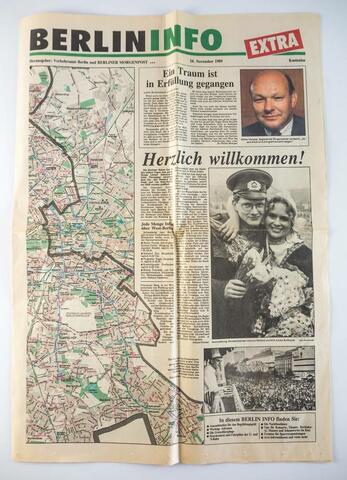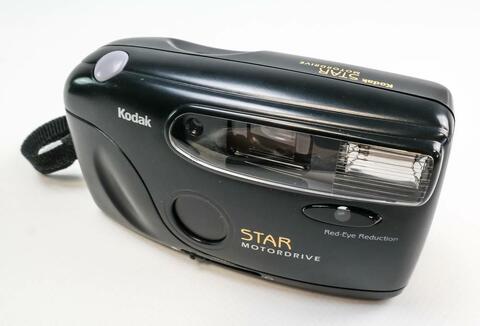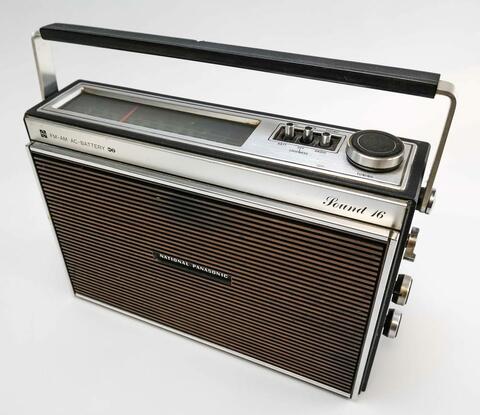From the collection
Minimum exchange and welcome money in the GDR
If you look back at inner-German travel with all its facets, sooner or later you'll come across the East German »minimum exchange« and West German »welcome money«. But what exactly does this mean and how did it affect people?
The GDR mark as a purely domestic currency
In order to prevent currency speculation, the export of the GDR's mark was basically banned. The mark was, thus, an internal currency that was only valid in the GDR. Since the GDR suffered from a shortage of foreign currency during its existence, a regulation restricting foreign currency transactions was passed by the Volkskammer on 1 December 1964. In order to open up new sources of money for trade on the international market, the »binding minimum exchange« was introduced. For this purpose, numerous GDR visitors from other countries in the West were used.
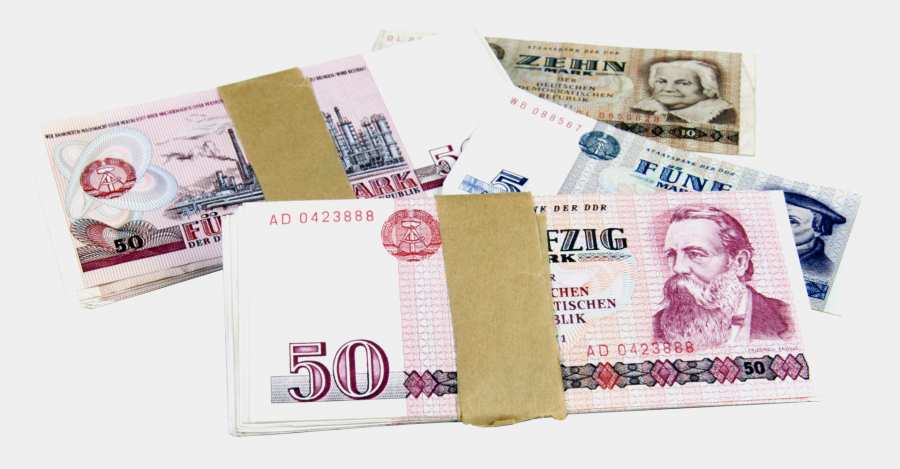
Minimum exchange as entrance fee to the GDR
From then on, Western individual travellers had to pay a kind of entrance fee to the GDR. From December 1964, a fee of 5 German marks (DM) per day of stay was charged for every West German; citizens of West Berlin had to pay 3 DM per day. No fee was charged for pensioners and children under 14. The above-mentioned amounts were exchanged at a ratio of 1:1, a profitable business for the GDR in view of the actual exchange rate based on market value, which fluctuated between 1:3 and 1:10. Over the years, the daily rates and validity were changed again and again. In the 1980s, for example, West Germans paid 25 DM per day, but pensioners only 15 DM. No distinction was made between West Germans and West Berliners. On 24 December 1989, the minimum exchange regulations were suspended by order of the GDR Finance Minister Uta Nickel, as the border had been opened shortly before and German reunification seemed likely. In total, the GDR government generated revenues of 4.5 billion DM in 26 years with the minimum exchange.
West German welcome money from 1970 to 1989
In contrast to the minimum exchange was welcome money. Welcome money was introduced by the Federal Government in 1970. It was originally intended to support East German travellers, in the early days mainly pensioners. The amount of 30 DM could be claimed twice a year. In 1988, the rate was increased to 100 DM, but it could only be claimed once a year. Until the mid-1980s, about 60,000 visitors a year benefited from the welcome money, after which the number increased abruptly. The reason for this was that the GDR had decided to make travel easier. When the border was opened in November 1989 and thousands of GDR citizens visited the western part of Berlin or the Federal Republic of Germany within a few days, also because of the welcome money, there were considerable logistical problems. Many paying agencies were simply overwhelmed by the rush of visitors from the East. In Berlin, additional and provisional paying offices were set up just one day after the border was opened on the instructions of the then-governing mayor, Walter Momper. By 20 November 1989, almost 11 million GDR citizens had visited the Federal Republic or the western part of Berlin.
Objects on the subject of welcome money in the collection
Our collection includes a brochure from the immediate period of the opening of the Wall. Published by the Berlin Senate Department for Health and Social Affairs, it provides information on the opening hours and addresses of payment offices for welcome money. In the middle section, there is a city map with marked payment offices in the western part of Berlin.
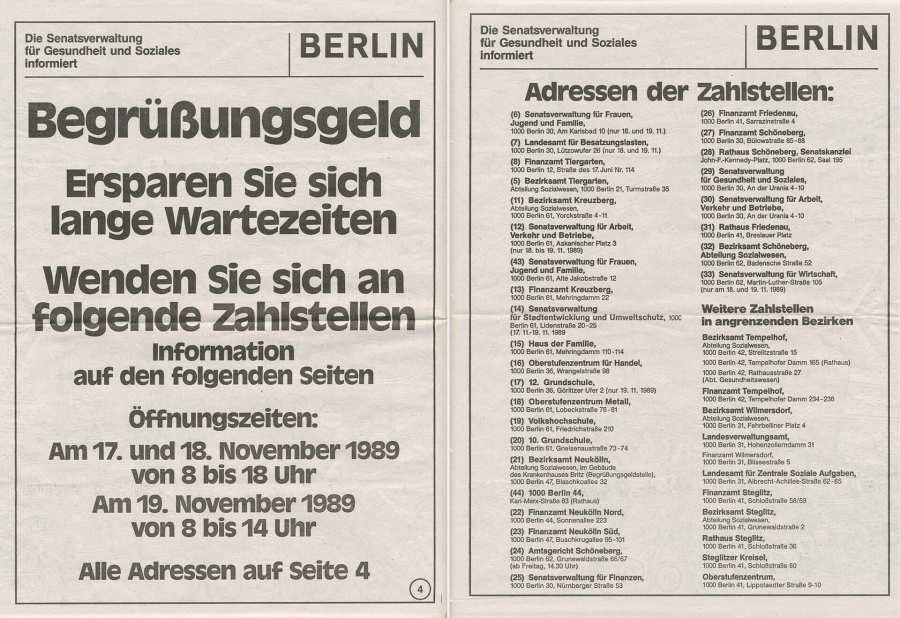
A photo from Berlin's Badstraße in the district of Wedding is also in our collection. The picture, dated 11 November 1989, shows crowds of people waiting in front of the paying offices in Wedding. This photograph gives a good impression of the rush to the pay offices in order to secure welcome money during the turbulent turnaround months after the fall of the Berlin Wall. The photographer of the picture is Matthias Schubert from Berlin.
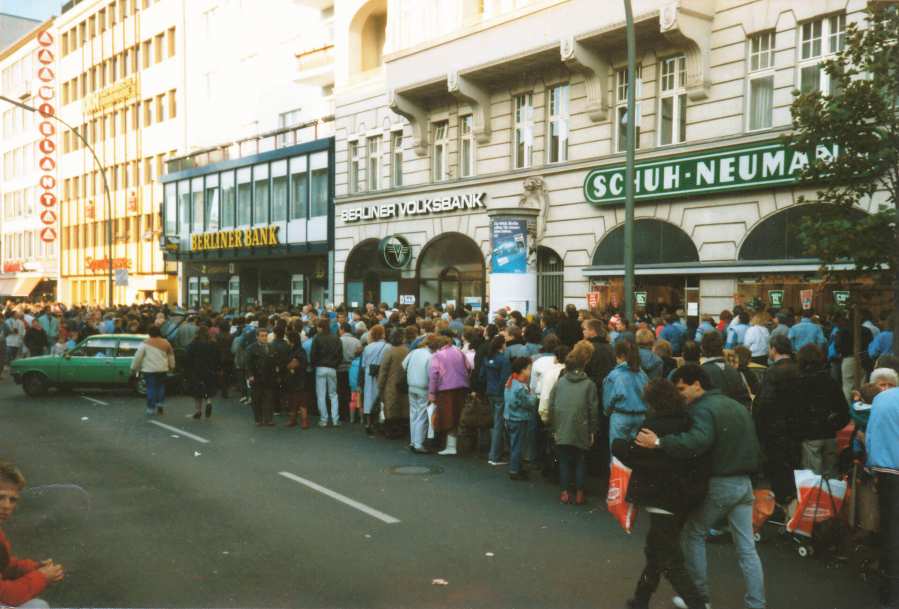
In November and December of 1989 alone, approximately 4 billion DM were paid out as welcome money. On 29 December 1989, payment of the welcome money was discontinued and replaced by a foreign exchange fund into which both German states paid.
Editor's note: The blog post first appeared on 3 September 2015.
